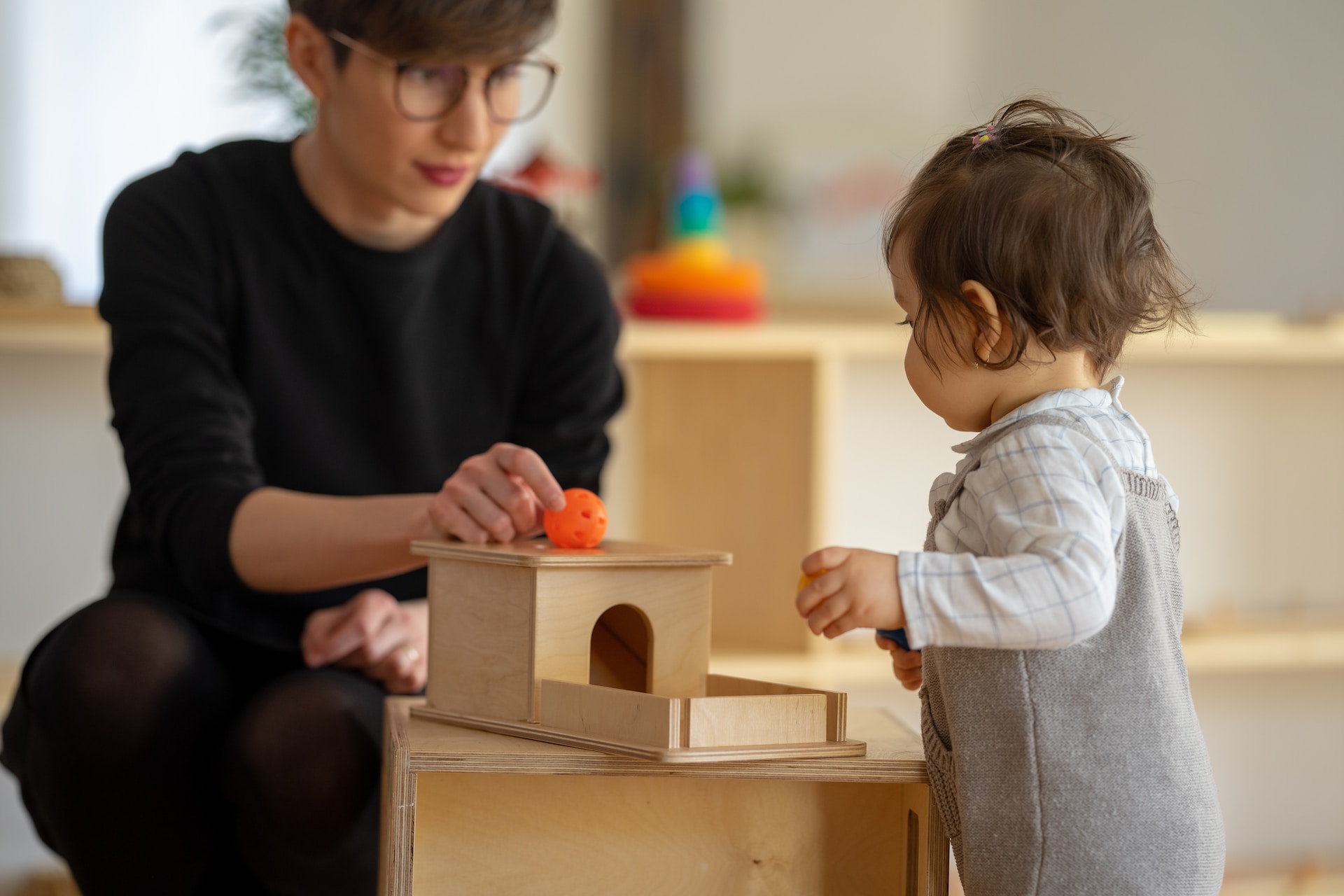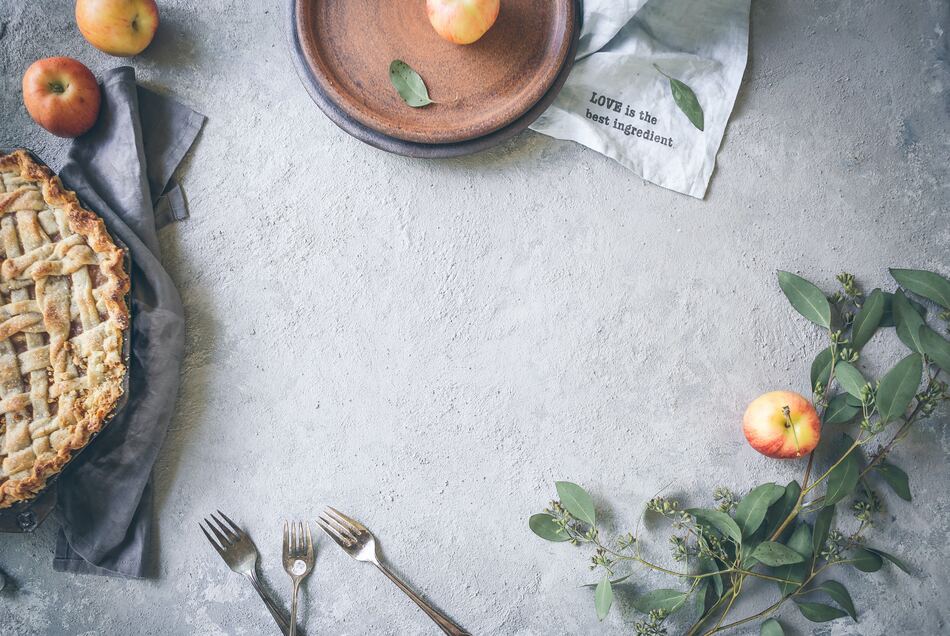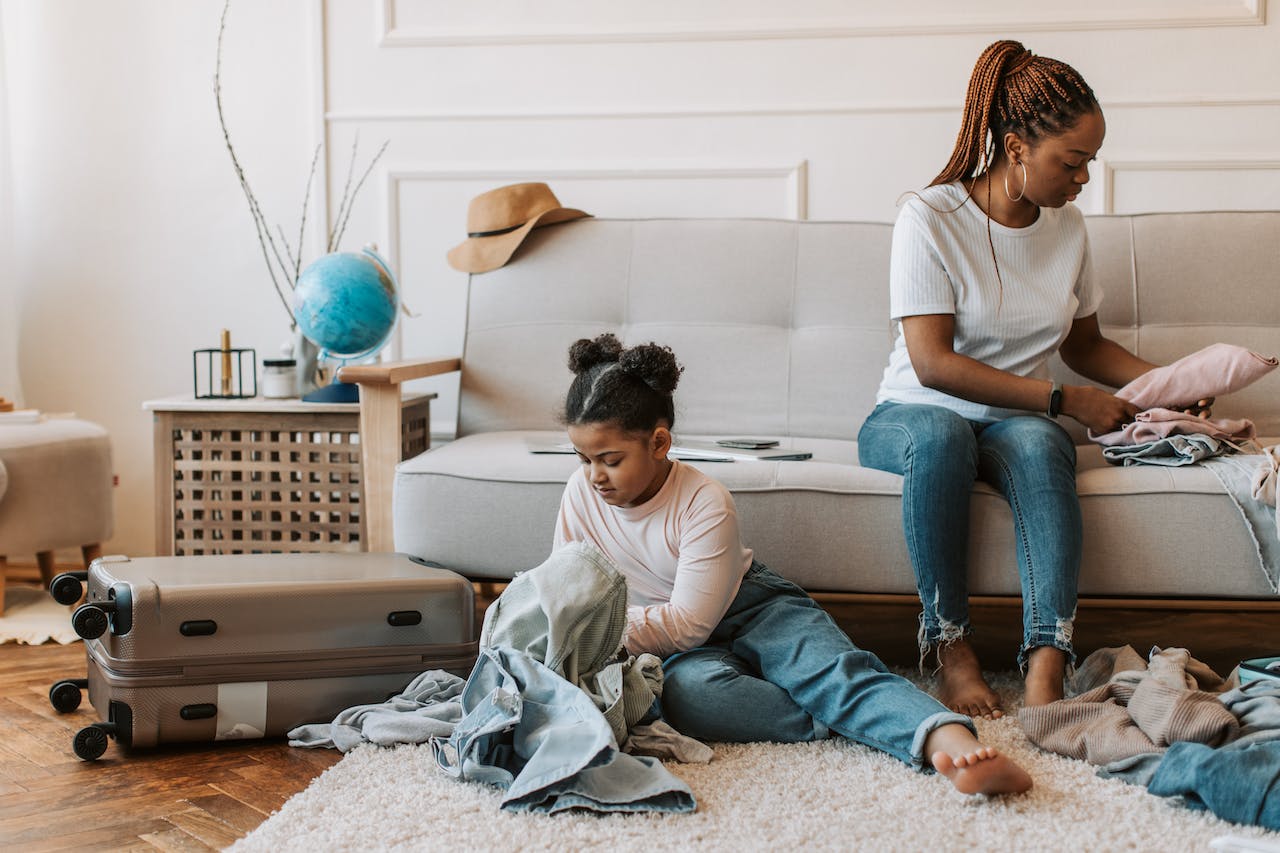Whether you have a newborn or an older child, creating a safe home environment and ensuring the safety of your children should be a top priority. In this article, we have advice and tips on childproofing your home and understanding home safety basics. By implementing these measures, you can protect your kids at every age and stage.
Childproofing your home: essential safety rules at every age
As a responsible parent, childproofing your home is always going to be top of mind, ensuring that your children are safe and secure at all times. From newborns to toddlers and older children, you can create a safe environment for your kids.
How can parents educate their kids about their general safety?
Embracing a Safer 2024: National Family Partnership’s “Lock Your Meds” Campaign
As we embark on a new year, the National Family Partnership is championing positive change through its impactful “Lock Your Meds” campaign, urging families to prioritize medication safety for a healthier home.
The Importance of Medication Safety:
Improper medication storage poses hidden risks, especially in households with young children or teenagers. The “Lock Your Meds” campaign safeguards against accidental poisonings and prescription drug abuse, fostering a culture where health and safety take precedence.
Incorporating Medication Safety into Resolutions:
Make medication safety a proactive part of your family’s resolutions by investing in secure storage solutions. Beyond locking up medications, the campaign emphasizes creating an environment where well-being is paramount.
Practical Steps for Medication Safety:
Secure Storage:
Invest in a lockable medicine box or cabinet to keep medications inaccessible to the wrong hands.
Medication Inventory:
Regularly check and log medication quantities and expiration dates for effective health management.
Safe Disposal:
Dispose of expired or unused medications through pharmacy take-back programs to prevent improper disposal.
Lock Your Meds. Be Aware. Don’t Share.
The Vaultz Medicine case is perfect for storing, organizing, and protecting your important medical supplies.
Community Impact:
Securing medications actively reduces the risk of misuse, contributing to the broader effort to combat prescription drug abuse in our communities.
Navigating Change Together:
The National Family Partnership supports families in this journey. Visit our website for resources, tips, and guidance to create a safer home.
Join us in making 2024 the year of safety and well-being. Cheers to a healthier, happier new year for all our families!
Elizabeth Golshteyn from Informed Families
Newborns and infants (0-1 year)
There are several safety rules you need to follow to ensure they are safe in your home:
- Always keep your newborn’s crib free from any loose blankets, pillows, or toys that could potentially cause suffocation
- Make sure that your baby’s crib is in a safe and secure position, away from any windows or hazardous furniture
- When bathing your kids, ensure the water is below 120°F to avoid accidental burns
- Keep all hazardous products and medications out of reach of children
- Use a baby monitor to watch your baby while sleeping or unattended
How baby monitors help babies sleep safely
Parents often worry about Sudden Infant Death Syndrome (SIDS) due to its sudden, unexplained nature and the tragic loss of seemingly healthy babies, often aged 1-4 months. SIDS typically occurs during sleep without warning signs, leaving parents feeling helpless. So, ensuring newborns’ safety during nighttime is crucial.
Preventing SIDS involves creating a safe sleeping environment for babies. While there is no guaranteed method to eliminate the risk, adhering to recommended practices can significantly reduce the likelihood of SIDS.
The primary purpose of the Sense-U smart baby monitor is to monitor babies’ security even if parents remotely observe their baby, promoting the safety and well-being of the baby. Sense-U smart baby monitor systems track the baby’s abdominal movement, sleeping position, and temperature while streaming HD video directly to your smartphone anytime, anywhere. It notifies parents of lights and sounds in case of any concerning changes, such as slow abdominal movement, sleeping on the stomach, temperature too high/low, or detected motion/sound.
Sense-U smart baby monitor tracks baby’s movements so that parents can move around the house or engage in other activities while keeping a close eye on their baby, especially during naps or at night.
While a baby monitor may reduce SIDS risk during sleep, it doesn’t offer absolute protection. Staying informed and seeking healthcare guidance ensures infant sleep safety.
A team from Sense-U, committed to protecting baby & parent’s sleep
ABCs of safe sleep for kids
Preventative factors like the ABCs help ensure your baby sleeps in a safe sleep environment. Following these guidelines is directly related to reducing the risk of sudden infant death syndrome (SIDS) and accidental suffocation & strangulation in bed (ASSB). But what are the ABCs?
- A stands for Alone. This means that your baby should always sleep alone in their sleep space. There shouldn’t be any pillows, blankets, stuffed animals, or other objects in their sleep space. This also includes humans and animals as well! Your baby shouldn’t sleep with you, a sibling, or a pet in their sleep space.
- B stands for Back. We always want to place the baby on their back in their sleep space instead of their tummy or side. Back sleeping is safest, and since the Back to Sleep Campaign started, it has significantly reduced the occurrence of SIDS. Once your baby can roll on their own, it’s okay if they end up on their side or tummy- as long as they are getting there themselves!
- C stands for Crib. The safest sleep space for your baby is a crib bassinet or playard. These spaces have been safety tested and passed all necessary safety requirements. Their mattresses are firm and flat surfaces that play a huge part in sleep safety. Examples of unsafe sleep surfaces include an adult bed, a swing, a car seat, a nest pod, etc.
Carianna Gibb from All The Sleeps
Toddlers (1-3 years)
As your child grows, you need to adjust your childproofing tactics to ensure their safety:
- Install safety gates at the top and bottom of any stairs to prevent falls
- Secure all heavy furniture or appliances to prevent them from tipping over
- Install latches and locks on cabinets and drawers containing hazardous substances, such as cleaning products
- Ensure that all electrical outlets have safety covers
How to keep kids safe from corners and edge bumpers
During my career in the window coverings industry, I’ve been glad to see the numerous improvements in child safety for blinds and shades. As a father of three children, I also had to learn (sometimes the hard way, sorry, kids!) to identify and mitigate other safety hazards in the home. Tables and other furniture are often the source of bumps and bruises for younger children, but furniture with sharp edges and corners can cause cuts and more acute injuries. Covering those edges with bumpers or other protectors is a great start. You can also consider temporarily swapping out or permanently replacing furniture likely to cause repeated injury to unsteady toddlers. Relocate or store problematic furniture until your kids are steadier, and look for something with rounded corners and softer edges. Falling is inevitable as kids learn to walk, but stitches don’t have to be!
Kids grow up fast, so try also to anticipate new risks that come with each stage of development and as they grow taller. The edge of the dining table or corner of the counter might not have been an issue at first, but they could be one growth spurt away from catching it at full scamper. Think of how to eliminate hazards or adjust behaviors around them – for example, position bar stools at overhanging counters to redirect their walking/running path. Good luck!
Jim Melcher from Blindster.com
Keep toddlers safe from falling furniture
Toddlers can be adventurous and very curious. And many toddlers are avid climbers. Unfortunately, if they climb on top of furniture, it can fall on top of them, leading to a fatal accident. Use furniture straps to secure the furniture against the wall to keep your toddler safe from falling furniture. It might seem like your toddler’s dresser or other furniture won’t fall over, but if your toddler climbs onto it, their weight will be added to the front, which can fall on top of them. Using a furniture strap connected to the furniture and the wall using the stud, you can ensure the furniture stays put. Furniture straps can be used on bookcases, bureaus, shelves, and dressers.
Another thing to consider is giving them a safe space to climb so you can teach them where they can and can’t climb due to safety. Consider purchasing an indoor climbing toy for your toddler to safely expend the energy and feed their desire to climb to “conquer the world.” After all, climbing helps a child’s development by honing their spatial and directional awareness and boosting physical skills such as balance and agility. We don’t want to discourage it but encourage it in a safe space.
Nicole Johnson, Founder and Lead Pediatric Sleep Consultant from The Baby Sleep Site
Advice for making a child’s room safe while allowing them to explore and grow
Creating a safe and stimulating environment for a child to grow and explore in their room involves a balance of safety features and elements that encourage creativity and personal development. Fawn&Forest offers a range of products that cater to these needs:
- Age-Appropriate Beds. Opt for a convertible crib or a toddler bed with security rails for young children transitioning from a crib. The Oeuf’s 2022 Classic Toddler Bed is a notable option with a safe, sleek design that helps ease this transition.
- Soft, Cushioned Rugs. For nurseries with hardwood or tile, a quiet, cushioned rug like the Monstera leaf-shaped rug from Lorena Canals can provide a comfortable space for play and prevent injuries from falls.
- Comfortable Seating. Add a comfortable chair, like the Babyletto Kiwi Electronic Recliner, during read-aloud or cuddling. This ensures the child feels your presence and has a dedicated space for shared activities.
- Creative Opportunities. Creative tools like chalkboards, clay for modeling, or dress-up boxes encourage self-expression and make the room feel like a safe haven for creativity.
Austin Helton from Fawn & Forest
Preschoolers (3-6 years)
Preschoolers are more active and independent, which means you need to be extra vigilant in ensuring their safety:
- Teach your kids about the importance of fire safety
- Limit your child’s access to electronics when they are unsupervised to prevent accidents
- For controlling child access to restricted areas, some security systems offer features that complement childproofing efforts.
Older kids (6+ years)
Older kids are usually more curious and active. By showing them basic safety rules and keeping them in a safe environment, you can keep fostering their independence and development.
- Teach them how to respond in emergencies, such as calling 911, providing their address and relevant information, and staying calm in stressful situations
- Keep tools, knives, scissors, and other sharp objects stored and out of their reach. Teach older kids how to use these items responsibly under supervision
- Reinforce safety rules, including not sharing personal information with strangers, understanding safe boundaries, and what to do if a stranger is at the door. Home security systems and smart locks can give you peace of mind as you can monitor any activity from your smartphone
- Supervise and teach cooking safety basics to prevent burns or accidents in the kitchen. Show them how to use kitchen appliances safely and encourage them to ask for help when needed
- Teach kids about online safety, including the risks of sharing personal information online and the importance of privacy settings on social media. Set parental controls on devices and supervise their online activities.
Benefits of setting up parental controls for kid security online
As the founder of Call Emmy, an online platform dedicated to assisting busy parents, I understand the critical importance of child safety in the digital realm. Setting parental controls is a proactive safeguard for our children’s online experience. Firstly, it helps filter harmful content, ensuring children are exposed only to age-appropriate material. This is crucial in their formative years when they are most impressionable.
Secondly, parental controls aid in managing screen time effectively, fostering a healthy balance between digital interaction and real-world activities. This balance is vital for their overall development and well-being.
Moreover, these controls can be instrumental in preventing cyberbullying and protecting personal information. Parents can shield their children from potential online predators and data theft by monitoring and restricting communication channels.
Lastly, introducing these safety measures early on cultivates a sense of responsible digital citizenship in children. It teaches them the importance of online safety and privacy, preparing them for a future where digital literacy is key.
In essence, parental controls are not just tools for security; they are instrumental in nurturing informed, responsible, and safe digital natives.
Arezou Zarafshan, founder of Call Emmy
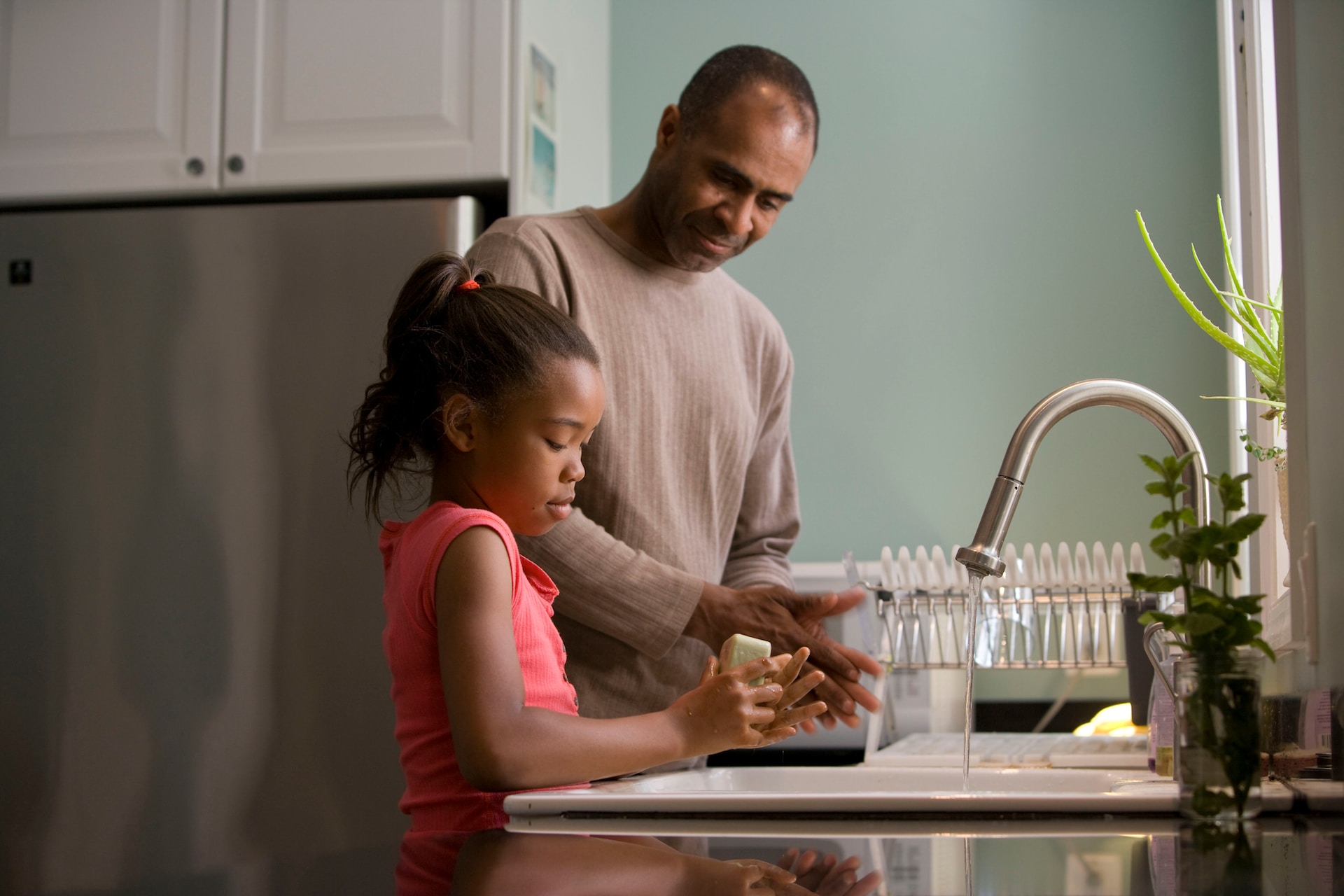
Home safety basics: creating a secure environment
Ensuring the safety of kids at home involves implementing several safety measures that cover different aspects of household hazards and potential risks.
- Security systems: Installing a reliable security system with alarms, motion sensors, and cameras helps deter intruders and protects children from potential threats. Smart security systems with remote monitoring can be helpful when you are away from home
- Fire alarms and carbon monoxide detectors: Smoke alarms and carbon monoxide detectors are critical safety devices that immediately alert residents to potential fire hazards or carbon monoxide leaks, allowing for a quick response and evacuation if necessary. Make sure they are working properly, especially near bedrooms. Develop and practice a fire escape plan with your family. Teach your children how to call 911 in case of an emergency and never leave cooking food unattended
- Securing doors and windows: Smart locks, deadbolts, and window locks prevent unauthorized access and enhance home security. Window guards or safety locks on windows reduce the risk of falls
- Pool safety: If you have a pool or any water feature at home, install a fence with a self-locking gate around the pool area. Pool covers, alarms that detect motion in the water, and constant supervision are additional layers of protection to prevent accidents
- Regular maintenance: Conducting regular maintenance checks on home appliances, electrical systems, and structural elements ensures everything is working properly and reduces the risk of potential hazards.
How to adjust a home environment to be Montessori and safe for children
Creating a Montessori-inspired and safe home environment for children involves several key adjustments:
- Child-sized furniture: Incorporate furniture that is child-sized and easily accessible. This includes tables, chairs, shelves, and beds that are low to the ground, enabling children to use them independently and safely.
- Accessible and organized materials: Arrange toys, books, and learning materials on low shelves within the child’s reach. Materials should be well-organized and orderly, promoting a sense of responsibility and encouraging children to put things back after use.
- Natural, non-toxic materials: Choose toys and materials made from natural, non-toxic substances like wood, cotton, and metal, avoiding plastic as much as possible. This aligns with the Montessori philosophy of connecting children with nature and providing real-life experiences.
- Safe spaces for movement: Ensure ample, uncluttered space for children to move, explore, and play safely. This means securing furniture to the wall, covering electrical outlets, and removing sharp objects or dangerous items from reach.
- Real-life tools and activities: Provide real-life, child-sized tools for cooking, cleaning, and gardening. This helps children learn practical life skills in a safe, controlled environment.
- Sensory and creative exploration: Include elements that stimulate sensory and creative development, such as art supplies, musical instruments, and textured materials. These should be easily accessible and safe for children to explore.
- Respect for the child’s autonomy: The environment should foster independence. This means allowing children to choose activities according to their interests and abilities and offering opportunities to do things themselves.
- Minimalistic approach: Avoid overcrowding the space with too many toys or materials. A minimalistic approach encourages concentration and reduces overstimulation.
- Safety measures: Implement general safety measures like using safety gates, locking cabinets with hazardous materials, and ensuring secure windows and doors.
- Natural light and plants: Use natural lighting and include plants in the space. This creates a calming environment and connects children with nature.
Remember, the key is to create an environment that is nurturing, stimulating, and, above all, safe, allowing children to explore and learn at their own pace.
Lucie from Montessori Parenting
How important is promoting independence in young children who tend to be less coordinated and less aware of their surroundings? Is there a trade-off between independence and safety?
Protection and preparation are the two sides of the same coin that parents must walk when raising children to be safe. Too much protection and the child fails to develop the injury-prevention knowledge and skills that they will require as they face increasing challenges in life; too little protection, and the child is placed in a precarious situation. Preparation is key to ensuring the right amount of protection. The role of the adult is the strategic preparation of life skills, understanding how the world, tools, and technology work, and equipping the child according to their current capacity. This requires the opportunity for risk-taking within safety boundaries.
Children are born utterly dependent upon the adult; however, in reasonably short order, the demand manifests as the child follows their inbuilt drive for independence. Scaffolding this independence is a craft of observation followed by informed follow-up for the adult to support the child’s safe development appropriately. Parents must rely on their understanding of their child to implement the right demonstration at the right time.
A few examples that a parent might consider are as follows:
- As 79% of bed injuries are from cot falls, families may provide a floor bed when the child can propel themselves around the floor.
- Sharp implements are another risk. Cutting with a wide blade helps prevent fingers from being caught underneath (one hand on the handle and one hand on the top) or using a specially designed cutter.
- Hot and cold can be identified through different environmental materials, specifically thermic bottles. Educators (or parents) introduce the hot bottles progressively – using a cloth to show safe handling when the temperature is beyond warm.
Parents must protect children from many hazards in our community and prepare them for them. By providing a range of tools and experiences as children are driven to independence, parents are setting them up to be alert and ready to be self-protective and prepared for life’s challenges.
Vicki McKinnon from Montessori Australia
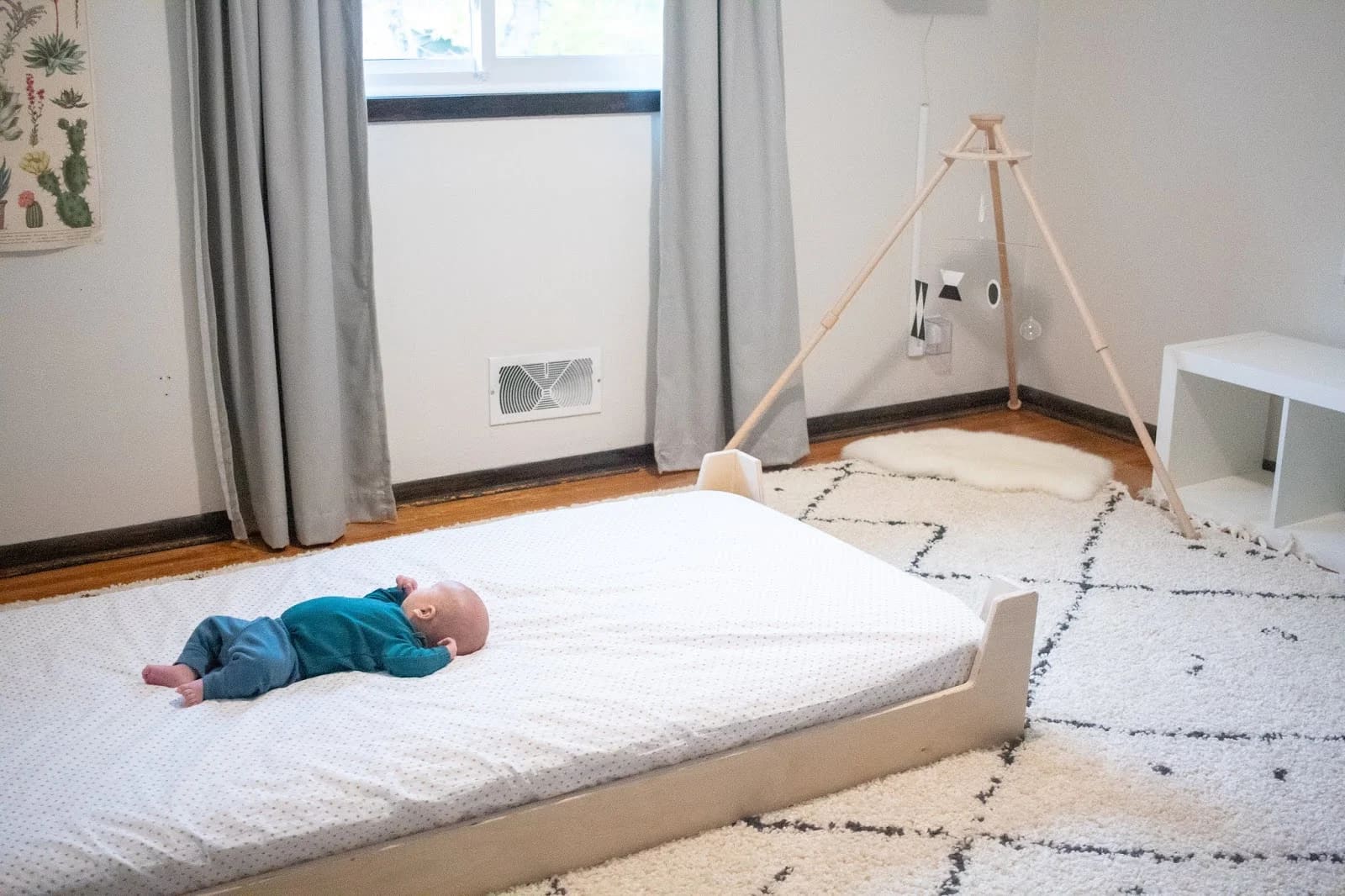
How to keep pests away for your child’s safety
Ensuring your child’s safety is of utmost importance. One thing that is often overlooked is keeping pests away from their surroundings. Insects can pose various health risks to children, including measles, mumps, and communicable diseases. It is important to use effective pest control methods to protect your child from these potential dangers.
Start by maintaining a clean and hygienic environment inside and outside the home. Regularly clean up any food scraps or spills, as they can attract pests such as bees, cockroaches, and rodents. Ensure proper garbage disposal by storing food in airtight containers. In addition, keep your child’s play area neat and clutter-free, as pests can hide in piles of toys or other items.
Another important thing is limiting the areas where pests can enter your home. Look for any cracks or gaps in doors, windows, and walls, and seal them with perfume or weather strips. This will not only keep pests out but also help with energy efficiency. Also, consider putting curtains on windows and doors to keep out flying insects. Check regularly for any signs of pests such as dirt or chewed wire, and if necessary, contact professional pest control professionals and take immediate action. Through various procedures following these preventive measures, you can create a safe and pest-free environment for your child.
Darko from Famous Parenting
How can parents best encourage open communication with their kids about safety concerns and create a supportive environment for them to approach any issues?
Firstly, build a habit of listening. When kids are young, conversations about their favorite toys or shows seem endless, but they lay the foundation for later, more crucial conversations. Demonstrate that you’ll listen and keep the door open for them to come to you regardless of the topic.
Secondly, get comfortable with the uncomfortable. Kids have a knack for exploring whichever subjects push our buttons. They may catch you off guard, but these topics also allow you to share your values and give input.
To handle uncomfortable questions:
- Get curious rather than panicky: find out what interests your child about the topic. This will allow you to respond with more clarity and calm.
- Stick honestly and simply: give just enough detail to answer, but don’t assume they need every last detail. They’ll ask if they need more.
- Give yourself space if needed: you might say, “I have to think about that to give you a good answer. How about we talk at bedtime?”
- Allow your child to talk: you’ll learn more details if you don’t interrupt. When kids feel heard, they’re much more likely to share the whole picture and to be more receptive to our advice.
Bio:
Alissa Zorn is the author of Bounceback Parenting, A Field Guide for Connection, Not Perfection, and founder of the website Overthought This. She’s a trauma-informed coach and cartoonist passionate about helping people overcome perfectionism and shame to build authentic, joyful lives.
Kitchen safety rules for kids at home
At Kidstir, we not only teach young aspiring chefs how to cook, but we also teach them the importance of kitchen safety. Families are supported in maintaining a safe kitchen environment through reminders to store cleaners and chemicals in a secured cabinet, separate sharp utensils from others and keep them out of reach, unplug appliances when not in use, and ensure that pot handles face toward the back of the stove. Moreover, they advise against using kitchen magnets if there are infants or toddlers in the household, as these items could pose choking hazards if accessible.
For children, the emphasis is on seeking adult permission before engaging in cooking or baking activities. It’s encouraged to wash hands, roll up long sleeves, and tie back hair for safety. Children are also encouraged to carefully read the recipe and prepare ingredients beforehand to reduce stress during cooking. Additionally, they’re reminded to be cautious about cross-contamination when handling raw meat, eggs, and flour. Spills should be promptly cleaned up, and efforts should be made to maintain cleanliness throughout the cooking process, although acknowledging that it may not always be possible. Most importantly, the focus remains on having fun and enjoying the shared cooking experience!
Heather Ray from Kidstir
Small objects parents need to keep away from children
At Adventure Nannies, the safety of children is of utmost importance, and professional care providers are acutely aware of the inherent danger small objects pose to young children. Ensuring that children, especially those under the age of five, do not have access to small objects is crucial for their well-being. At this age, children are naturally curious and tend to explore their surroundings by putting things in their mouths, increasing the risk of choking, which is one of the leading causes of injury among children, especially toddlers and infants. Parents and caregivers must be vigilant in keeping small, potentially hazardous items out of reach. This involves carefully choosing age-appropriate toys for their child and regularly inspecting the home environment for small objects that could pose a risk. By taking these precautions, parents and caregivers can significantly reduce the risk of choking incidents and ensure a safer environment for their children. Although many small objects can be problematic, here are some specific items that should be kept out of reach for little ones:
- Button Batteries
- Unprepared Food
- High-Powered Magnets
- Small Toys or Toy Parts
- Coins and Small Household Items
- Small Balls and Marbles
- Balloons
- Small Hair Accessories
- Pen or Marker Caps
Danielle Sadler from Adventure Nannies
Pool safety tips for families with kids
When it comes to pool safety, the most crucial tip is always to supervise your children around the pool! Actively watch them without getting distracted by your phone or a book.
Additionally, life jackets are an excellent idea for kids who aren’t strong swimmers, but they’re not a substitute for supervision. It’s also essential to get your kids swimming lessons. While knowing how to swim doesn’t eliminate the risk of drowning, it definitely helps.
Lastly, establish and enforce clear pool rules, like no running or pushing.
Teach your kids not to dive into shallow water and to always look for depth markers.
Remember, supervision is crucial regarding pool safety. Combine that with these other measures, and you’ll create a much safer environment for your kids.
Alicia Trautwein from The Mom Kind
Benefits of a pool enclosure or pool cover for kid’s safety
A pool enclosure or pool cover offers numerous benefits when it comes to ensuring the safety of children. Firstly, a physical barrier prevents unsupervised access to the pool area. This is particularly important for young children who may not fully understand the dangers of water and are at a higher risk of accidents. By enclosing or covering the pool, you create a secure environment that reduces the chances of accidental drowning or injuries.
A pool enclosure or cover protects against external elements such as debris, leaves, and insects. This means the pool water remains clean and free from potential hazards that could harm children. It also reduces the need for constant cleaning and maintenance, saving time and effort.
Moreover, a pool enclosure or cover can help regulate the temperature of the water, making it more comfortable for children to swim in, especially during colder seasons. This ensures that children can enjoy their time in the pool without any discomfort or risk of catching a cold. Overall, investing in a pool enclosure or cover is a wise decision to prioritize the safety and well-being of children while also providing convenience and peace of mind for parents or guardians.
Darko from Look What Mom Found… and Dad Too
Most hazardous objects for toddlers at home
Aside from some of the more well-known hazards, such as tipping furniture, household cleaners, medicines, or bodies of water, here are a few that might not be as well-known:
- Button cell and coin cell batteries. These are found in toys, greeting cards, key fobs, and other small items around the house, but if ingested, they are incredibly dangerous. For example, coin cell batteries can cause internal burns that can become life-threatening.
- Balloons. Children can accidentally suck in the balloon when trying to inflate it, it can pop, and a toddler can ingest a piece, plus the strings can be dangerous as well. The recommended age for balloons is eight years and older. That’s not to say you can’t have balloons for a party, but don’t give them to toddlers to play with, and if any of them break, make sure to clean them up.
- Purses and coat pockets. Whether it’s your own or a guest visiting, keep these items away from little hands and mouths. People can have all sorts of hazards, such as medication, coins, snacks, and even pepper spray. It’s best to keep these items locked away in a closet or hung out of reach.
Cathy Pedrayes from The Mom Friend Guide
The importance of creating a safe play zone at home for childrenA designated play zone adds extra supervision to playtime and fosters independence. By creating a safe play zone, the parent can feel more confident during playtime, providing children with a space where they can explore and play independently while ensuring that they engage in safe and appropriate play. This independence is essential for a child’s cognitive and emotional development. For the parent, knowing that your child is playing in a safe and secure environment reduces parental stress and anxiety. It allows the parent to focus on other responsibilities without worrying about their child’s safety. A safe play zone promotes emotional stability during a child’s cognitive development. Knowing they have a safe space at home to explore contributes to a child’s emotional security, providing them with a sense of stability while fostering a positive and nurturing environment.
Alexandra Nolan from City Chic Living
Importance of teaching kids about fire safety
Teaching kids about fireplaces and fire safety is paramount for their safety and the well-being of the entire household. While providing warmth and ambiance, fireplaces can pose potential hazards if children need to be made aware of the associated risks. Educating them about fireplace safety helps instill responsible behavior and prevents accidents.
Children should understand the importance of maintaining a safe distance from the fireplace, refraining from playing with fire tools, and never attempting to throw objects into the flames. Teaching them about properly using fire screens or barriers reinforces the concept of protective measures. Additionally, explaining the role of adult supervision when a fire is lit creates awareness about the potential dangers of unattended flames.
Fire safety education extends beyond the fireplace, encompassing broader principles such as the importance of having working smoke detectors, knowing emergency exit routes, and understanding the basics of fire extinguisher use. By imparting these lessons, parents and caregivers empower children with the knowledge and skills to safely navigate fire-related situations. This education lays the foundation for a lifetime of responsible and cautious behavior around a fire, contributing to the home’s safety.
Doug from American Chimney & Fireplace

Remember to focus on the home safety basics, including securing furniture and appliances, preventing falls and accidents, handling hazardous substances, and fire safety. Regularly update your childproofing strategy to address potential risks. Being proactive in childproofing your home and staying alert to potential hazards can help prevent accidents and keep your children safe.
